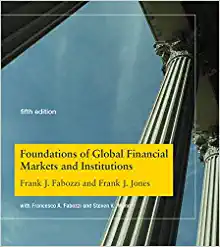Question
1. price differentiation in the insurance Reference : Abraham and Chiappori(2015) Classification Risk and itsRegulation https://www.elgaronline.com/view/edcoll/9781782547136/9781782547136.00017.xml (a) what it is meant by price differentiation in
1. price differentiation in the insurance
Reference : Abraham and Chiappori(2015) "Classification Risk and itsRegulation"
https://www.elgaronline.com/view/edcoll/9781782547136/9781782547136.00017.xml
(a) what it is meant by price differentiation in the insurance market?
(b) According to Abraham and Chiappori, type of price differentiation poses some "fairness" or ethical "problems"
why?
(c) According to Abraham and Chiappori, does the price differentiation in the insurance setting poses some other economic problem?
(d) The ACA tried to eliminate the price differentiation in the individual health insurance market. why this measures worsen the issue of asymmetric information in this market? Will it also generate adverse selection? why? why not?
(e) What was the rationale of the individual mandate (everybody must have a health insurance, or pay a penalty) in the ACA?
(f) Consider a basic problem of insurance, that is an individual (call him s) with income equal to Is = 1000, a monetary loss Ls = 300 and a probability of loss s = 0.2. Assume that the individual is risk averse. what id the expected value of this lottery?
(g) If the certainty equivalent for the the individual and the lottery above is CEs(x) = 880, what is the highest premium that the individual s is willing to pay for full insurance, Ps?
(h) Now, assume that in the economy, there is a second individual, call him r, with income equal to Ir = 1000, a monetary loss Lr = 300 and a probability of loss r = 0.5. Assume that the individual is risk averse. Calculate the expected value of this lottery.
(i) If the certainty equivalent for the the individual and the lottery above is CEr(x) = 800, what is the highest premium that the individual r is willing to pay for full insurance, Pr ?
(j) If in this economy there are risk-neutral insurance company, what do you know about the Pareto efficient allocations of this economy.
(k) If there is no asymmetric information, can one of the Pareto efficient allocations be reached by competitive markets of health insurance companies?
(l) Now assume that there is asymmetric information: If the proportion of the s individuals in the population is q = 1/2 , can one of the Pareto efficient allocations be reached by competitive markets of health insurance companies?
(m) If the numerical example that we considered were a good description of the economy, would you need the individual mandate to achieve an allocation that is both Pareto efficient and in which there is no price differentiation?
Step by Step Solution
There are 3 Steps involved in it
Step: 1

Get Instant Access to Expert-Tailored Solutions
See step-by-step solutions with expert insights and AI powered tools for academic success
Step: 2

Step: 3

Ace Your Homework with AI
Get the answers you need in no time with our AI-driven, step-by-step assistance
Get Started


